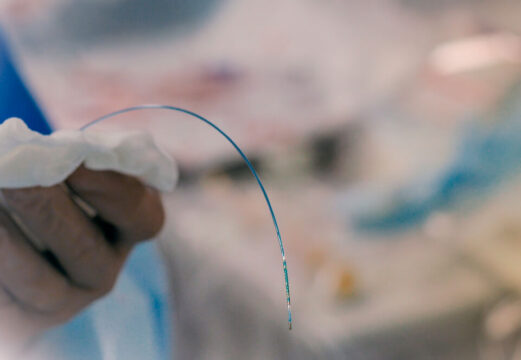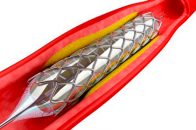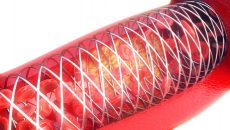Percutaneous intervention of femoropopliteal lesions have been the standard strategy these past two decades. The development of drug eluting stents (DES) or drug eluting balloons (DEB) has improved patency rate compared against conventional balloon angioplasty. The ILLUMINA -a multicenter study- looked into the polymer free self-expanding stent NiTiDES, which showed at 1 year an 87%…
Drug-Eluting Balloons Find Their Niche
According to this large European registry, drug-eluting balloons (DEBs) are competing with drug-eluting stents (DES) to treat in-stent restenosis. Drug-eluting balloons seem to work equally well for the treatment of long-term in-stent restenosis compared with new stent implantation (for the thin-strut DES registry). If DEBs can compete with DES—adding to the advantage of avoiding a…
EuroPCR 2019 | BASKET-SMALL 2: Drug-Coated Balloons vs. DES in Small Vessels
This angiographic substudy supports the safety of drug-coated balloons in small vessels. Despite better angiographic outcomes, there were eight cases of stent thrombosis among drug-eluting stent (DES) patients, while there was none with drug-coated balloons. In patients with small vessels, using a drug-coated balloon appears safe and comparable to DES, with favorable angiographic outcomes at…
DES and DCB with Similar Results in Femoropopliteal Artery Disease
Courtesy of Dr. Carlos Fava. Nowadays, peripheral interventions are on the rise and the technological development of stents and balloons would help achieve better outcomes. Both drug-eluting stents (DES) and drug-coated balloons (DCB) have proved to be beneficial for femoropopliteal interventions, but the actual role of each of these technologies remains unclear. This prospective, randomized 1:1…
Drug eluting Stents vs. Drug Coated Balloons for In-Stent Restenosis
The rationale behind the decision to not add another layer of metal to the artery sounded attractive and this was what paved the way for drug coated balloons as an alternative strategy to treat in-stent restenosis. “We’ve already got a stent in place, we only have to dilate and leave the drug” is what we…
New Strategies for the Femoropopliteal Artery
Courtesy of Dr. Carlos Fava. The incidence of peripheral vascular disease is clearly increasing, progressing towards critical ischemic claudication and amputation. Angioplasty is currently the treatment of choice for these pathologies. Several times, an implanted stent ends up cracking due to extensive calcification, increasing the rate of restenosis and worsening critical ischemia. Technological development on drug-eluting…
Promising outcomes for DEB in long femoropopliteal artery lesions
Courtesy of Dr. Carlos Fava. For type A and B femoropopliteal artery lesions, percutaneous transluminal angioplasty (PTA) with balloon has proven beneficial; however, drug-eluting balloons (DEB) have shown superiority as regards restenosis. Some studies have reported favorable outcomes for DEB in type C and D lesions, but its real benefit is still unclear. This study prospectively…
Instent restenosis: Drug eluting balloons or drug eluting stents?
Original Title: Long-Term Results of Everolimus-Eluting Stents versus Drug-Eluting Balloons in Patients with Bare-Metal In-Stent Restenosis 3-Year Follow-Up of the RIBS V Clinical Trial. Reference: Alfonso F. et al. JACC Cardiovasc Interv. 2016 Jun 27;9(12):1246-55. Courtesy of Dr. Agustín Vecchia. RIBS V 3 year follow up Stents have become the gold standard for…
Drug eluting balloon vs. second generation DES for restenotic lesions in bifurcations
Original Title: Drug-eluting balloon versus second-generation drug-eluting stent for the treatment of restenotic lesions involving coronary bifurcations. Reference: Toru Naganuma et al. EuroIntervention 2016;11:989-995 Courtesy of del Dr. Santiago F. Coroleu. PCI involving in-stent restenosis (ISR), especially in coronary bifurcations, is associated with high rates of recurrent restenosis and the need for new revascularization. Although drug…







